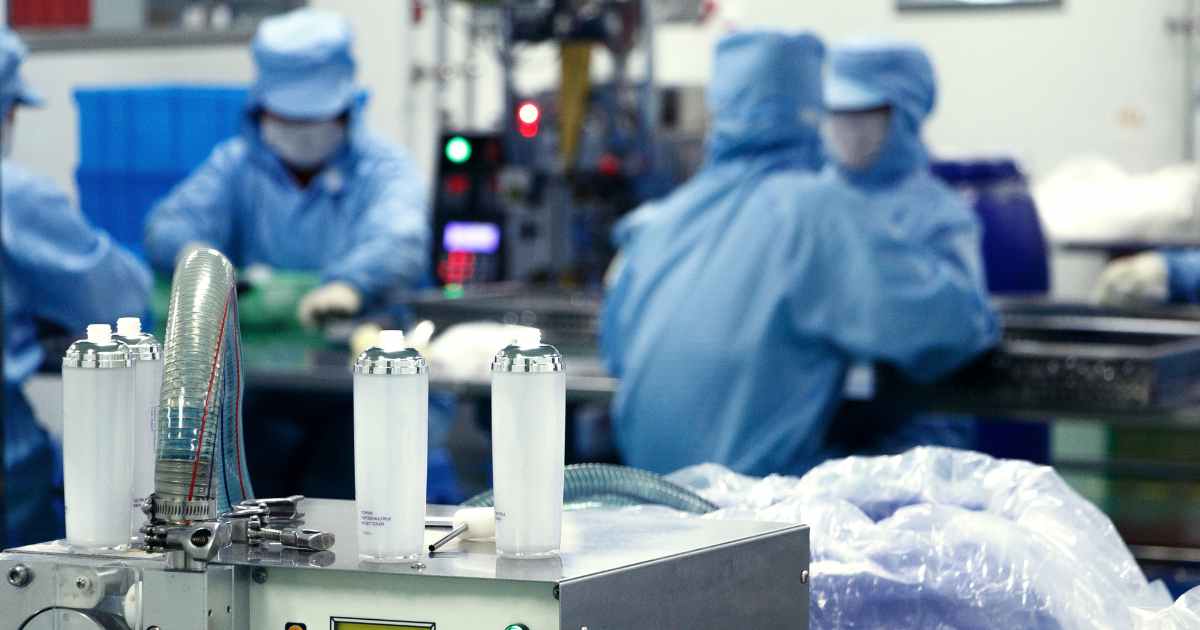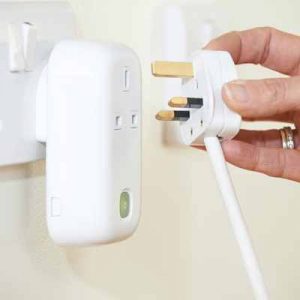Assembly fixtures are very important tools used in the factory to provide better quality, faster, and cheaper production. Almost every importer will like the sound of those benefits!
Checking fixtures are similar, but they are implemented to help you to catch defects and problems during production that can result in low-quality products.
So what are assembly fixtures (and checking fixtures), when are they used, who designs them, and how, and what examples can we look at?
Look no further, as we explore them right here!
Prefer listening to reading?
Listen to the audio for this post here:
What are assembly fixtures? (+ examples).
A fixture is a device that guides you to make an accurate placement of components during production when operators or machines are doing something to them which provides several benefits, such as increased speed, consistency, and reduced errors. They will usually be used at points of the assembly process where an operator is slow, fumbling, or quality issues tend to appear.
Production of industrialized products in large quantities almost always isn’t as simple as putting together lego. It will include complex assembly, such as putting the hinge into the eyeglasses’ arms. If there wasn’t a fixture to allow this to be done accurately and consistently, it would take a skilled craftsman a long time per piece to get it right. That would be expensive artisanal production, not mass production.
Also, imagine a dog collar where the operator needs to clip something to it 500 times a day. Without a fixture doing this by hand would be very tiring and could lead to injuries, whereas by using a fixture it could speed up the process 5-8X and make clipping it as simple as just sliding it on, With repetitive operations like this, pictures improve speed, quality, and safety for the operator.
The theory behind process engineers devising fixtures is to improve your production process making it better, faster, and cheaper (the same also goes for packaging and quality checking, too, for example). (01:17)
Benefits of assembly fixtures.
- Improved productivity
- Improved quality
- Reduced costs
- Consistent production (esp. where parts and products with tight tolerances are concerned) (11:00)
Fixtures’ role in mistake-proofing.
An excellent product design may help to reduce some mistakes during production, but it certainly doesn’t guarantee that nothing will go wrong.
The Japanese developed poka-yoke, or mistake-proofing, which can be used to error-proof product design. A good example is the three-pin electrical plug used in the UK.
Due to its design, it’s simply not possible to insert the plug into an outlet the wrong way which would otherwise cause a short. The same theory applies to assembly fixtures. They can be designed to prevent operators from putting together a part or product the wrong way on the production line, perhaps by physically blanking off areas to block them from attaching a part in the wrong place, for example. Or, say, a fixture that can only hold an enclosure with the correct orientation, meaning that an operator can’t accidentally insert screws into the wrong area.
Preventing mistakes on the production line in this way is critical, especially when we remember that any mistake made could be repeated thousands of times during mass production which could be very costly. (11:37)
Why good product design must include manufacturing process design.
Product design can help prevent errors, for example, a yellow wire’s destination being a yellow port on the product which is clear to see. But complex products in particular really need process design, too, because the assembly is so complex. The ultimate goal is to make assembly simple and error-free, maybe more similar to Lego than not. Concentrating on ‘Design for Assembly’ during your development will involve process engineers devising how your product can be made in a repeatable and efficient way before mass production can start, preferably by the time you have a final prototype.
Leaving this to the manufacturer once you have the final prototype is not a good idea. Their expertise may not be in process engineering and, in many cases, their motivation is to get the product made quickly so they can be paid. So their attention to improving the manufacturing process away from how they usually work, even if it could save you time and money, could be lacking. (16:04)
The timeline of when to work on process engineering and fixtures.
Leaving it until the last minute just before mass production starts may not be the best approach. Before production starts it is helpful for a process design engineer to visit the manufacturer and work through the steps one at a time and devise where assembly fixtures are needed and how to build them. (20:24)
Are fixtures hard to build and what materials can be used?
Fixtures can be both simple and complex depending on the job that they do. However, oftentimes they’re more simple than you may think. For example, a common fixture might just be two pieces of wood attached to form a right angle that holds the piece steady and in the right position for the operator.
The costs are generally low, and the results they give are worth far more than the cost. (22:50)
Who pays for and owns the fixtures?
Importers should generally pay for and own any designs and fixtures related to the product and its production. Fixture designs are important IP. Imagine that they’re critical to mass-producing your product without errors, but you need to switch to a new manufacturer for some reason and the old manufacturer won’t provide the fixtures or their designs (because they paid for and fabricated them). You and your new manufacturer would have to ‘work it out’ from scratch, leading to quality issues and delays.
As with other tooling design deliverables, this is IP you should seek to own (the same as plastic injection molds, for example) and it can be clarified that you pay for and own it in your manufacturing agreement. Ideally, you would have a list of fixture designs, which fixtures are currently in use, and when they need to be renewed (after X thousand uses), and this can be transferred to a new manufacturer when required. (23:37)
What are checking fixtures (used for QC)?
Checking fixtures are similar to assembly ones, but in this case, they help the inspector to see if a product or part is acceptable. They’re often dimensional, so if the part fits inside it the dimensions are correct, and if not it is out of the specified size range. But there are also testing stations which will alert the inspector with a light or sound if something is not correct, i.e. the product’s battery is dead. (26:50)
Examples of checking fixtures.
- Go-no-go gauge which has the maximum and minimum dimensions allowed. If the part falls through or doesn’t fit it is not acceptable. This is a common in-line quality-checking tool.
- Testing station: Wiring harness/loom checking fixture – each plug is plugged into the fixture for checking and you gain continuity and make sure that none are missed, as there are so many, and they’re all confirmed to be working before the harness is attached to a complex machine such as an automobile. (27:59)
How to decide where and how you need to be checking quality during production.
You need to take time to understand the assembly process and when each critical component can be checked and devise ways to do so (sometimes at stations on the line itself) in order to reduce defects during production.
For example, devices that hold water can be checked during production by filling them with air and checking their integrity by using a pressure gauge to see if the pressure holds. This means, on the line, it can be seen quickly and easily whether the component is leak-free. This requires a checking fixture which has a hose and pressure gauge that the inspector or operator can plug into the component, check, and then move on.
Another example is when working with PCBAs. You need to consider that assembly of a PCBA that has been damaged by static electricity will lead to defective products, so you need to incorporate a checking fixture like a ‘bed of nails’ for PCBAs into the production process. The operator/inspector will be wearing protective clothing to guard against ESD and they will place the PCBA onto the pins of the ‘bed of nails’ which will connect to its connection points and the fixture will indicate if the PCBA is working correctly. If so it can be assembled, but if not, perhaps someone touched it accidentally without protection earlier and fried it with static electricity and it must be put aside and not used.
A simple checking example is plugging in new bulbs to see if they light up. This principle can be used for circuits, too. (30:52)
The ROI of using assembly fixtures.
It might take just a few hours of an engineer’s time to devise and create fixtures, but the ROI on this time can be astronomical. Process engineers will examine the production line and find areas where operators are having difficulties or are slow and will devise creative fixtures to solve these problems. Remember, they can often do a lot with only a little, such as a few pieces of wood. If this helps avoid problems in thousands of pieces of your product, that cost-saving on time, rework, and scrap, not to mention avoiding angry customers, is well worth a few hours of an engineer’s time. (36:20)
Why pilot runs are helpful for identifying where fixtures are needed.
Doing a short production run will allow you/process engineers to find areas for improvement during each assembly stage that you may not have identified during the product design process without risking issues creeping into large numbers of mass-produced products. It’s also an evolving process that can be updated and refined between productions as and when issues are found. (38:15)


